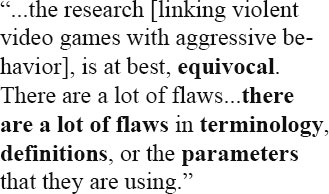Monthly Archives: October 2015
The Uncanny Violence of Video Games, Part III: “BOOM Salad Calls For An End to the Stigmatization, Marginalization, and Misrepresentation of Violent Video Games and the Players that Love To Play Them.”
Since June of this year, BOOM Salad has been renting its own “servers”[1] for the violent video game, Battlefield 4.[2] This means that, for the past several months, we have paid a company for the privilege of managing and maintaining our own online, multiplayer environment for the game. Virtually anyone in the world, who owns Battlefield 4, and has access to a high-speed Internet connection, can play on our servers.

In the 120 days that our Playstation 3 (PS3)server has been operational, and open to the public, we have played with and against a wide variety of age groups, cultures, ethnicities, and genders. This has afforded us a unique opportunity to observe and participate, first-hand, in what’s known as worldwide, multiplayer gaming, or, Massively Multiplayer Online Gaming (MMO, see Figure 1).
Important examples of the genre include World of Warcraft and Minecraft. The game, Minecraft, has become a global, cultural phenomenon, somewhere on par with the Pacman craze of the early-1980’s.[3] But more than just a simple maze in which the goal never changes, and never gets beyond the consumption of dots, fruit, and ghosts, Minecraft may very well be one of the most subtly complex video games ever devised.
Like its namesake, it is best to think of the game as having “layers” of complexity. Each layer provides numerous opportunities for pro-social, empathetic interaction with other players online. The number of players that can participate in a single session interactively depends on the platform, but for consoles like the Playstation 4 (PS4), the maximum is eight at a time.[4]
In conversations we have had with younger players of Minecraft,[5] we were told, time and again, that the primary motive for playing was building things with their friends. And by, “building things,” we don’t mean swords, and bombs, and other weapons, though all that is possible. The children we spoke with were far more interested in building castles with incredibly ornate bedrooms, and underground dwellings (see video below). And yet, because the game includes depictions of violence in its battle play (which can be turned on or off), it is equated with other, so-called “violent-video games,” like Battlefield 4, and is, therefore, considered by many in the medical community to be, “harmful [to society].”[6].
In Parts I and II of this series, we demonstrated how the arguments against video games with violent depictions are based on a so-called, “link,” between real-world violence and video game violence. This “link” is observable, according to various medical studies, [7] in those who play violent video games, in the measurable decline in cognitive function in areas that are known to regulate and influence aggressive and violent behavior. Whether or not these conclusions are accurate, [8] the fact is they do not provide a satisfying answer to the most important question of all, (something BOOM Salad has endeavored to do since our first issue, [9]): Why do people play these games in the first place?
An Important Message from the BOOM!

Since the release of our last issue, and more specifically, Part IIa and IIb of our feature series, “The Uncanny Violence of Video Games,” several things have occurred to cause us to postpone the third and final article in the series. The first thing that happened was that we broke all of our previous traffic records. Daily views, unique daily visits, number of total views, all of these and more, were completely smashed. Because of this overwhelming response, we decided to have both IIa and IIb translated into Japanese, (see articles below).
We did this for numerous reasons but most importantly, as our mission states, we endeavor to be international in our focus and scope. Japan represents one of the largest populations of gamers in the world, and a huge Battlefield 4 fan base. In other words, how could we not?
The third thing that occurred has formed the basis of the article that follows. This past month, we had a chance to sit down and chat with Dr. Atilla Ceranoglu (click here for more information on Dr. Ceranoglu’s work and practice), a highly regarded child psychiatrist, who, like BOOM Salad, has publicly challenged the premise and underlying theories that formulate the anti-violent video game argument.

As a man of science and medicine, Dr. Ceranoglu’s credentials are unimpeachable, thus we felt it was important that our readers have an opportunity to read what he had to say.
For these reasons and others, we decided to push the release of Part III of The Uncanny Violence of Video Games, and instead, use it as the feature article in our historic SIXTH ISSUE of the BOOM, (which we can now confirm will be released on October 31, 2015).
We would like to thank Dr. Ceranoglu for his valuable time and contributions to the BOOM, as well as, our growing body of readers, for their interest and support of our work. All we do, we do for our readers. – BOOM.
PS. Those that visit the BOOM will NEVER have to worry about the need of an ad blocker. Never…never…never.
BOOM Salad Interview #3: Dr. Ceranoglu shares his thoughts on violence, video games, and why kids have fun playing Grand Theft Auto.
(Editor’s Note: The following interview was recorded this past September, exclusively for BOOM Salad.)
BOOM: Greetings Dr. Ceranoglu and thank you for your willingness to share your thoughts with our readers.
Dr. Ceranoglu: You are welcome.
BOOM: If I may, what is it that interests you about the subject of so-called, “violent-video games” and their effect on behavior?
Dr. Ceranoglu: The reason that [the subject] has been interesting to me is that in all of this conversation about video games, I think we are missing the big picture, because the conversation has been high-jacked or dominated, with concerns about the violence, and the link between the video games and violence. But the research on that is, at best, equivocal. There are a lot of flaws, that you have already mentioned [on BOOM Salad] so I am not going to go into that in detail, but there are a lot of flaws in terminology, definitions, or the parameters that they are using.

In all this, we are missing a bigger picture. There are some non-controversial effects of video games and media in children’s lives. When it comes to sleep, when it comes to attention, when it comes to academic performance, and other experiences in the child’s life, which is being displaced by time spent on video games. That’s what we’re missing, we have missed out on that conversation because our attention is [predominantly] on violence.
The studies that I look at are interesting to me because they tell about the relationship between the video game and video game play and [their effect on] attention or cognitive functions of a child, and these studies are done, usually, by neuroscientists.
BOOM: Over the last three months, BOOM Salad has interviewed several leading scientists that have conducted research, specific to video games that have violent depictions. In one such interview, a noted proponent, and one of the pioneers of the anti-violent video game argument, stated that, “there is no [clinical] definition for a violent video game.” By saying that it would seem that he has compromised his own research, or at least undermined the claim that his findings demonstrate a link between aggressiveness and the playing of, “violent-video games,” since, according to him, there is no such thing. How do you respond to that?
 Dr. Ceranoglu: The problem is that [the definitions being used by these studies are] not coherent. They are fuzzy at best. Not only are the definitions incoherent, but they are not uniform. What they are measuring is not necessarily descriptive of the problem at hand, or violence or aggression. [For instance], one of the tests they use for cognitive precursor is they have people play a violent-video game, and then they have them do a fill-in-the-blank test. First of all, a person is not a machine. How that person reacts to something on that one occasion, does not necessarily carry over if the circumstances were completely different. I see kids play Call of Duty, and [other] violent games, and they make jokes and laugh about it (see Video below). But, when they see the real thing in the emergency room, they are scared to death, just like you or I would be. They react just like everyone else. People are not machines.
Dr. Ceranoglu: The problem is that [the definitions being used by these studies are] not coherent. They are fuzzy at best. Not only are the definitions incoherent, but they are not uniform. What they are measuring is not necessarily descriptive of the problem at hand, or violence or aggression. [For instance], one of the tests they use for cognitive precursor is they have people play a violent-video game, and then they have them do a fill-in-the-blank test. First of all, a person is not a machine. How that person reacts to something on that one occasion, does not necessarily carry over if the circumstances were completely different. I see kids play Call of Duty, and [other] violent games, and they make jokes and laugh about it (see Video below). But, when they see the real thing in the emergency room, they are scared to death, just like you or I would be. They react just like everyone else. People are not machines.

BOOM: So then Doctor, what should we be looking at?
Dr. Ceranoglu: First off, should we really look at if video games cause violence or not? Is that what we should be looking at in expense of other priorities? Is that where we should be spending our research dollars? What about poverty? Or, the socio-economic climate that’s going on? Where parents are being pushed out of homes, chasing two or three jobs, because they can’t make ends meet. [Life] is much more than the video game. Shouldn’t we start with that [as our guide]?
Once we have all the questions answered and problems solved, maybe then we can start looking at the effect of video games. In that situation we should start with comparative studies that gather data to a minute detail of what kids are doing at home, with friends, outside, their athletic involvement, their academic involvement, their family structure, family approaches, and video game habits, and what is their aggression or violence or delinquency in later years.
